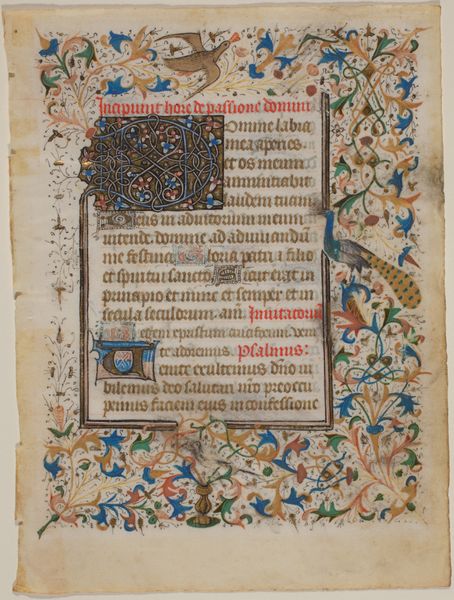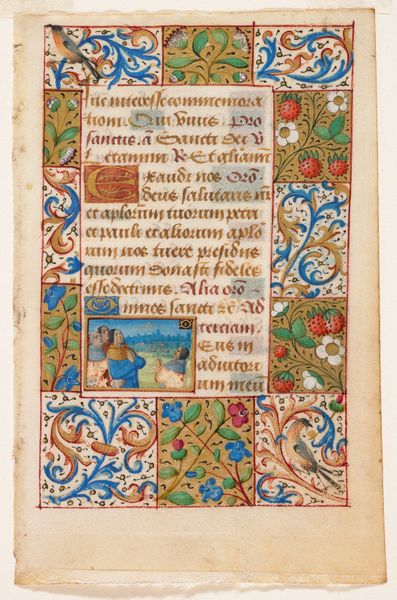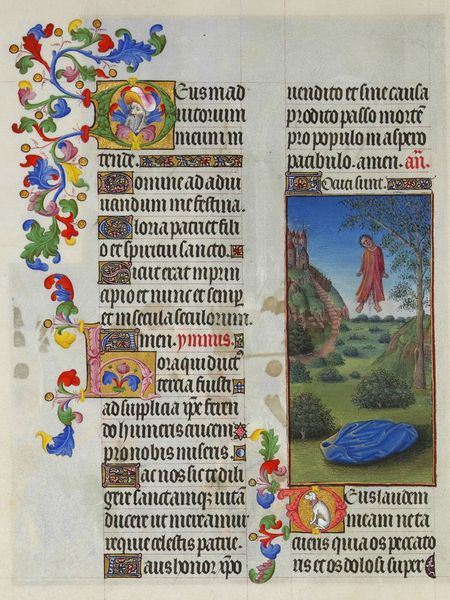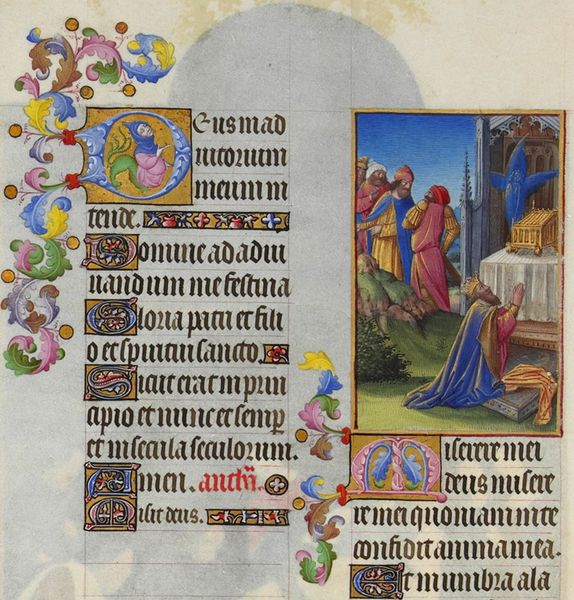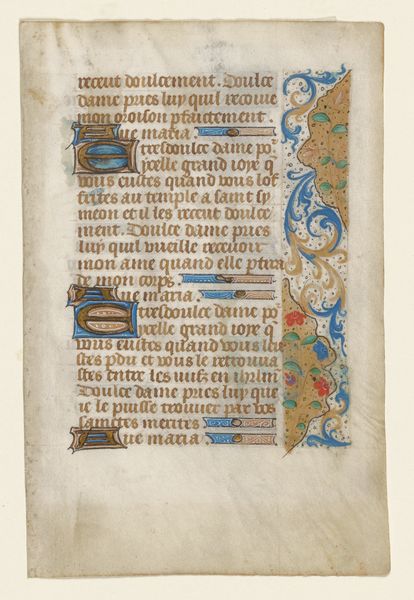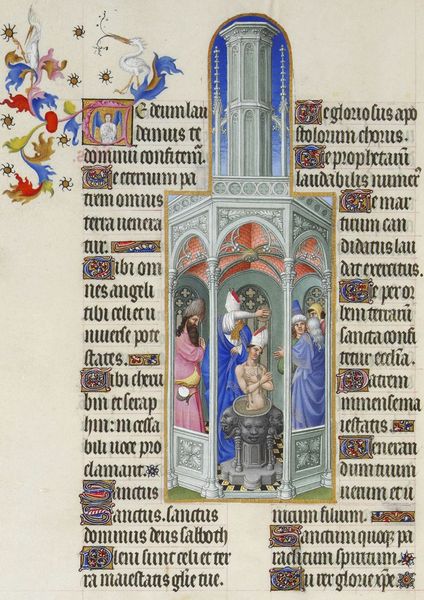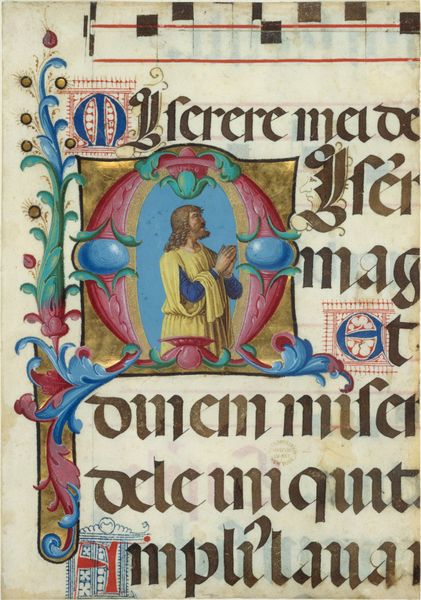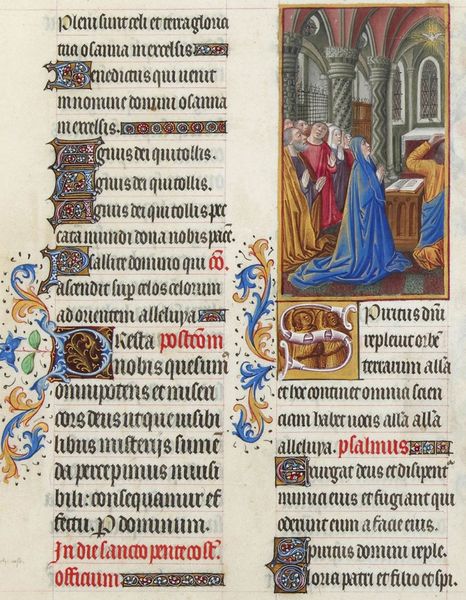
drawing, painting, gouache, gold, watercolor, ink
#
drawing
#
medieval
#
painting
#
gouache
#
gold
#
figuration
#
watercolor
#
ink
#
watercolour illustration
#
international-gothic
#
decorative-art
#
miniature
Dimensions: 5 3/4 x 3 3/4 in. (14.61 x 9.53 cm) (image)6 1/4 x 4 7/16 in. (15.88 x 11.27 cm) (sheet)
Copyright: Public Domain
Editor: So, here we have a "Leaf from a Book of Hours," made around 1500 by an anonymous artist. It’s got drawing, painting, gouache, gold, watercolour and ink – quite the combination! I find the detailed floral border incredibly charming. What’s your interpretation of this piece? Curator: Considering the social context, Books of Hours were essentially the must-have accessory for wealthy individuals during the late medieval period. They were personal devotional objects, signaling piety and status. The meticulous detail and use of expensive materials like gold weren’t just artistic choices; they were deliberate displays of wealth and power aligned with the Catholic Church. Editor: Power? I thought it was just a prayer book! Curator: Exactly, but think about it – owning such an object conferred status and positioned the owner within a specific social hierarchy. Also consider how the Church itself was a major political force shaping lives. Commissioning such artwork was a form of patronage and an assertion of control. Editor: So, the pretty flowers aren't just decorative? Curator: The flowers are also symbolic. Roses often represent the Virgin Mary. The very act of meticulously rendering each bloom can be seen as a meditative exercise, further reinforcing the owner’s piety and perhaps communicating their relationship to the prevailing social order. Editor: I never considered how much social messaging could be packed into something so small and, frankly, beautiful! Curator: Precisely. These “leaves” offer insights into the cultural and religious landscape of their time. They underscore how art is invariably intertwined with social power structures and religious institutions. Editor: Wow, looking at this artwork with all this new knowledge has definitely enriched my perspective, moving beyond its initial charm. Thanks for highlighting the politics within a prayer book! Curator: And thank you for looking so attentively; there’s a lot more beneath the surface!
Comments
minneapolisinstituteofart almost 2 years ago
⋮
Flemish Books of Hours were often decorated with borders of plants and animals set against a gold-colored background. Here, much of the actual gold used to embellish the decorated letters has been scraped away, exposing the bright white of the gesso used to seal the porous surface of the vellum prior to gilding. The leaf with the nearly continuous text features the Lord's Prayer. The leaf with the more frequently interrupted text opens with a call and response from the opening phrase of Psalm 69, a formula used to ask for God's assistance at the beginning of each hourly prayer throughout the day. This call is then followed by the Minor Doxology ("Glory be to the Father…") and finally the Little Office of the Blessed Virgin Mary, which ask the Lord to remember that he was conceived and made flesh in the Virgin's womb.
Join the conversation
Join millions of artists and users on Artera today and experience the ultimate creative platform.

